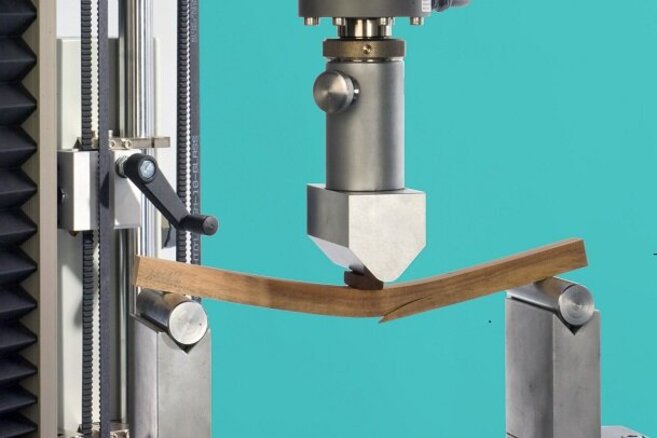Project
Changes of the environment and climate on wood formation and wood properties
![[Translate to English:]](/media/_processed_/5/e/csm_IMG_1809_Minicoring_tree_24__Laanila__Inari_24.5.2009_klein_41910737a0.jpg)
Impact of changes of the environment and climate on wood formation and wood properties, including dendrochronology
All wood properties relevant for its usability are developed under the influence of natural and anthropogenic environmental factors during its formation in the living tree. Hereby, environmental changes are permanently archived in the wood as long as the tree is living or used as building timber or preserved in the ground for centuries. Such an archive in trees can be used to reconstruct past climate conditions and to predict future modifications in wood structure and eventually wood quality.
Background and Objective
At sites with extreme climate conditions such as those close to the tree line in northern Scandinavia trees are reacting more sensitive to climate changes. The research project is aiming at the determination of climate-related variations of wood formation dynamics as well as wood quality.
Approach
With microscopic techniques we analyse the growth-ring structures of various tree species as well as with high-resolution monitoring techniques especially for pine trees growing close to the boreal tree line in northern Finland intra-annual cambium dynamics. The results are used to reconstruct past climate as well as to predict future wood formation under different climate scenarios.
Our Research Questions
How does climate change affect wood formation in trees?
Results
Intra-annual growth dynamics of Scots pine trees growing in the boreal zone were determined over a period of 5 consecutive years. When comparing two sites, one close to the tree line and one about 200km south of it, a delay of the onset and an earlier cessation of wood formation could be revealed for the treeline site. Two thirds of radial growth was produced for trees of both sites within only four weeks from mid-June to mid-July, independent of whether the growing season started earlier or later. Roughly, the duration of wood formation was seven weeks at the northern site and nine weeks at the southern site. Earlywood formation at the southern site obviously is positively associated with summer temperature, whereas at the northern site a more indifferent association was found. Cambium activity in the analysed years started after reaching 12.5% of the site-specific long-term annual heat-sum average. It seems possible that the trees at the northern site got temporarily impaired from a moisture deficit due to a lack of snow fall in May combined with an above-average warm period from May to July.
Funding Body
-
European Union (EU)
(international, öffentlich) -
Deutsche Forschungsgemeinschaft (DFG)
(national, öffentlich)








